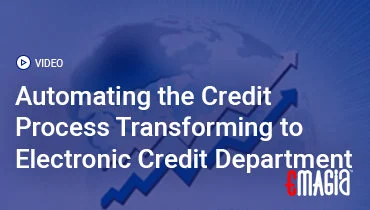Every time a lender extends a hand to a borrower, whether it’s a bank offering a home loan or a business providing credit to a customer, there’s a fundamental question at play: Will the money be paid back? This is the core of what is a credit risk. It’s the chance of a financial loss for a lender due to a borrower not meeting their obligations. Understanding this concept is absolutely essential for anyone involved in finance, from massive banking institutions to small business owners.
This comprehensive guide will take a deep dive into the world of credit and risk, exploring its various forms, how it is measured, and the crucial steps taken to manage it effectively. We’ll demystify complex terms and provide a clear framework for grasping this vital aspect of the financial world.
Understanding the Core of Debt Risk
At its heart, credit risk is the possibility of a financial loss. For a bank, it could be a defaulted loan. For a company, it could be an unpaid invoice. It’s the simple, yet profound, reality that a promise of repayment might be broken. This isn’t just about a borrower’s character; it’s about their capacity to pay, the economic climate, and countless other variables that can affect their ability to fulfill their debt obligations.
The concept of debt risk is not new. It has been a central part of trade and commerce for centuries. However, in our modern, interconnected financial system, its complexities have grown exponentially. From a large corporation issuing bonds to a consumer using a credit card, the potential for a failure to pay is a constant factor that must be considered and mitigated.
The Key Pillars of Credit Risk in Banking Industry
For a bank, managing this form of financial uncertainty is the cornerstone of its business model. A bank’s profitability and stability are directly linked to its ability to accurately assess and handle the potential for defaults. When we talk about banking credit risk, we are referring to the sophisticated systems and processes that financial institutions use to make lending decisions and maintain a healthy portfolio of loans.
A bank’s entire existence hinges on the principle of lending money and getting it back with interest. Therefore, a robust framework for managing this risk is not a luxury, but a necessity. This framework includes everything from individual loan officer decisions to institution-wide policies and regulatory requirements. It is a multi-layered process designed to protect the bank and its depositors from significant losses.
A Deeper Dive into the Definition of Credit Risk
To fully grasp this concept, let’s explore the formal credit risk definition. It is the potential that a counterparty to a transaction, whether a debtor, a bond issuer, or a financial institution, will fail to fulfill their contractual obligations. This can lead to a direct loss of principal and interest for the lender, but also indirect costs related to collection efforts, legal fees, and administrative overhead. The loss can be partial or complete.
The credit risk meaning is all-encompassing, applying to a wide range of financial instruments. It is present in mortgages, corporate bonds, trade receivables, derivatives, and sovereign debt. Any transaction that involves one party promising a future payment to another contains an element of this type of risk. This is why a thorough credit risk assessment is so vital before any financial commitment is made.
The Varied Forms of Repayment Risk and Loan Risk
Not all repayment challenges are the same. This is why the world of finance classifies different kinds of risk. Here are some of the most common types:
1. Default Risk: This is the most straightforward and most recognized type. It is the possibility that a borrower will fail to make the required payments on a loan, bond, or other debt instrument. It is the classic example of a borrower not paying back what they owe.
2. Concentration Risk: This form of risk arises from a lack of diversification in a loan portfolio. For example, if a bank has lent a large percentage of its funds to a single industry, like the real estate sector, it faces significant concentration risk. If that industry suffers a downturn, the bank’s entire portfolio could be at risk. This is a crucial element of risk management credit risk.
3. Country (or Sovereign) Risk: When a lender extends credit to a foreign government or entity, they face the risk that political or economic instability in that country could prevent the debtor from making payments. Currency fluctuations or political upheaval can lead to a financial loss, a concept critical to international finance.
4. Downgrade Risk: This occurs when a borrower’s credit rating is lowered by a rating agency. This can increase the cost of borrowing for that entity and make it more difficult for them to access future credit. It is a subtle but important form of risk that can have significant financial consequences.
5. Institutional Risk: This is the risk of loss due to the failure of a financial institution. This type of risk is also sometimes referred to as counterparty risk. It is the risk that the other party in a financial transaction will not be able to fulfill their end of the deal. This is a very important consideration in the world of derivatives and other complex financial instruments.
6. Credit Spread Risk: This risk is tied to the difference in yield between two debt instruments. It is the risk that the spread will widen, thereby increasing the market value of the debt and leading to a potential loss for the lender. It is a more technical type of risk, but still a crucial one for those in the fixed-income market.
The Critical Process of Credit Risk Analysis
Before a loan is approved or a bond is purchased, a comprehensive credit risk analysis is conducted. This is the process of evaluating the creditworthiness of a potential borrower. It is a meticulous review of a borrower’s financial history and current standing to predict their ability to repay a loan.
For individuals, this analysis often involves looking at their credit score, a number that reflects their past payment behavior. For businesses, the analysis is much more in-depth. It often includes a review of financial statements, cash flow projections, and the overall business model. The goal is to determine the probability of default and the potential financial loss that would result from it. This is the heart of credit assessment and business credit risk evaluation.
The analysis also considers the “Five Cs of Credit”:
- Character: The borrower’s reputation and payment history.
- Capacity: The borrower’s ability to repay, based on their income and existing debts.
- Capital: The borrower’s financial resources, including their savings and investments.
- Collateral: The assets pledged to secure the loan, such as a house or a vehicle.
- Conditions: The purpose of the loan and the prevailing economic conditions.
The Comprehensive Process of Risk Management Credit Risk
Managing the potential for defaults is an ongoing process that extends far beyond the initial assessment. It is a continuous cycle of identification, measurement, monitoring, and mitigation. This is the essence of a robust credit and risk management system, and it is a top priority for any financial institution or large corporation. The credit risk management process is designed to minimize financial losses and ensure the long-term stability of the lending entity.
Key steps in this process include:
- Setting Policies: Establishing clear lending policies and procedures.
- Assessing Risk: Analyzing individual borrowers and assigning a credit risk score.
- Pricing Risk: Adjusting interest rates and loan terms to reflect the level of risk. A higher-risk borrower will be charged a higher interest rate to compensate for the greater potential of default.
- Portfolio Diversification: Spreading loans across different sectors, industries, and geographies to minimize concentration risk.
- Ongoing Monitoring: Continuously tracking the financial health of borrowers to identify early signs of trouble. This may involve regular financial reviews and stress testing.
The goal of the risk management credit risk process is not to avoid risk entirely, but to take on an appropriate amount of it in exchange for a profitable return. It is a delicate balancing act that requires a high degree of skill and foresight.
The Importance of a Credit Risk Report
After a thorough analysis, the findings are often compiled into a formal credit risk report. This document provides a comprehensive overview of a borrower’s financial health and the associated risk factors. It includes key financial metrics, an evaluation of the borrower’s ability to pay, and a summary of any potential red flags. These reports are a vital tool for decision-makers, providing the objective data needed to make informed choices about lending.
For a business seeking to improve its own standing, understanding how to read and interpret these reports is crucial. It provides insight into how potential lenders and partners view their financial health and can help them identify areas for improvement. This is a key part of understanding a company’s business credit risk profile.
Real-World Examples of Credit Risk in Banking and Business
To put these concepts into perspective, let’s look at some real-world situations. The most common credit risk example is a borrower defaulting on a mortgage. When an individual can no longer make their home loan payments, the bank faces a financial loss. The bank may then have to foreclose on the property to recover some of its investment, a process that is both costly and time-consuming. This highlights the practical implications of repayment risk.
Another example involves a business. Imagine a large retailer that extends credit to a small supplier. If the supplier’s business fails and they are unable to pay their debt, the retailer suffers a financial loss. This is a common form of business credit risk, and it is why companies have dedicated teams to manage their accounts receivable and collections processes. In both cases, the risk is about the failure of one party to pay another, with consequences rippling through the financial system.
A Deeper Understanding: What is the Definition of Credit Quality Risk?
The term credit quality risk is often used interchangeably with the more general term. However, it specifically refers to the risk that a borrower’s financial standing will deteriorate over time. A borrower might be considered low-risk today but, due to unforeseen circumstances like an economic downturn or a change in their personal situation, their credit quality could worsen. This is why continuous monitoring is so important for long-term loans. The initial credit assessment is just the beginning of a long relationship of managing the potential for a decline in the borrower’s ability to pay.
Emagia’s Pioneering Approach to Credit Risk Management
In today’s fast-paced digital world, the traditional methods of assessing and managing repayment risk are becoming outdated. Manual processes are slow, prone to human error, and struggle to keep up with the sheer volume of data. That’s where companies like Emagia come in, providing a new way to handle credit and risk management in banking and business.
Emagia’s solutions leverage artificial intelligence and advanced automation to transform the entire process. Their platforms can instantly analyze vast amounts of data from multiple sources, providing a real-time, 360-degree view of a borrower’s financial health. This capability allows businesses and banks to make faster, more accurate decisions, reducing the likelihood of a bad debt. By automating key steps, from data collection to risk scoring, Emagia enables organizations to scale their operations without increasing headcount, creating a much more efficient and effective risk management system. This approach redefines the way companies handle credit risk evaluation and reporting, turning a reactive process into a proactive one.
FAQs About Credit Risk and Repayment Risk
What is the difference between credit risk and market risk?
While both are forms of financial risk, they are fundamentally different. Credit risk is specific to a borrower’s ability to pay back a debt. Market risk, on the other hand, is the risk of a loss due to broader market fluctuations, such as changes in interest rates, stock prices, or currency exchange rates. A bank might face a loss from a bad loan (credit risk) or from a decline in the value of its investments (market risk).
How can a business assess a potential client’s credit risk?
Businesses can use a variety of tools, including credit reports from agencies, trade references from other suppliers, and public financial data. They should analyze factors like the client’s payment history, financial stability, and the overall health of their industry. This thorough analysis is a critical part of business credit risk management.
Why is credit risk so important in banking?
For a bank, managing this risk is the single most important part of its business. If a bank makes too many loans to high-risk borrowers who default, it could suffer significant losses, which could lead to a financial crisis. A sound credit risk management in banks process is essential for protecting the bank’s capital and maintaining the stability of the entire financial system.
Can a person with a high credit score still be a credit risk?
Yes. While a good credit score is a strong indicator of a person’s reliability, it does not tell the whole story. Unexpected events like job loss, a medical emergency, or an economic downturn can all affect a person’s ability to repay a loan, even if they have a history of responsible borrowing. This is where a holistic credit assessment is vital.



